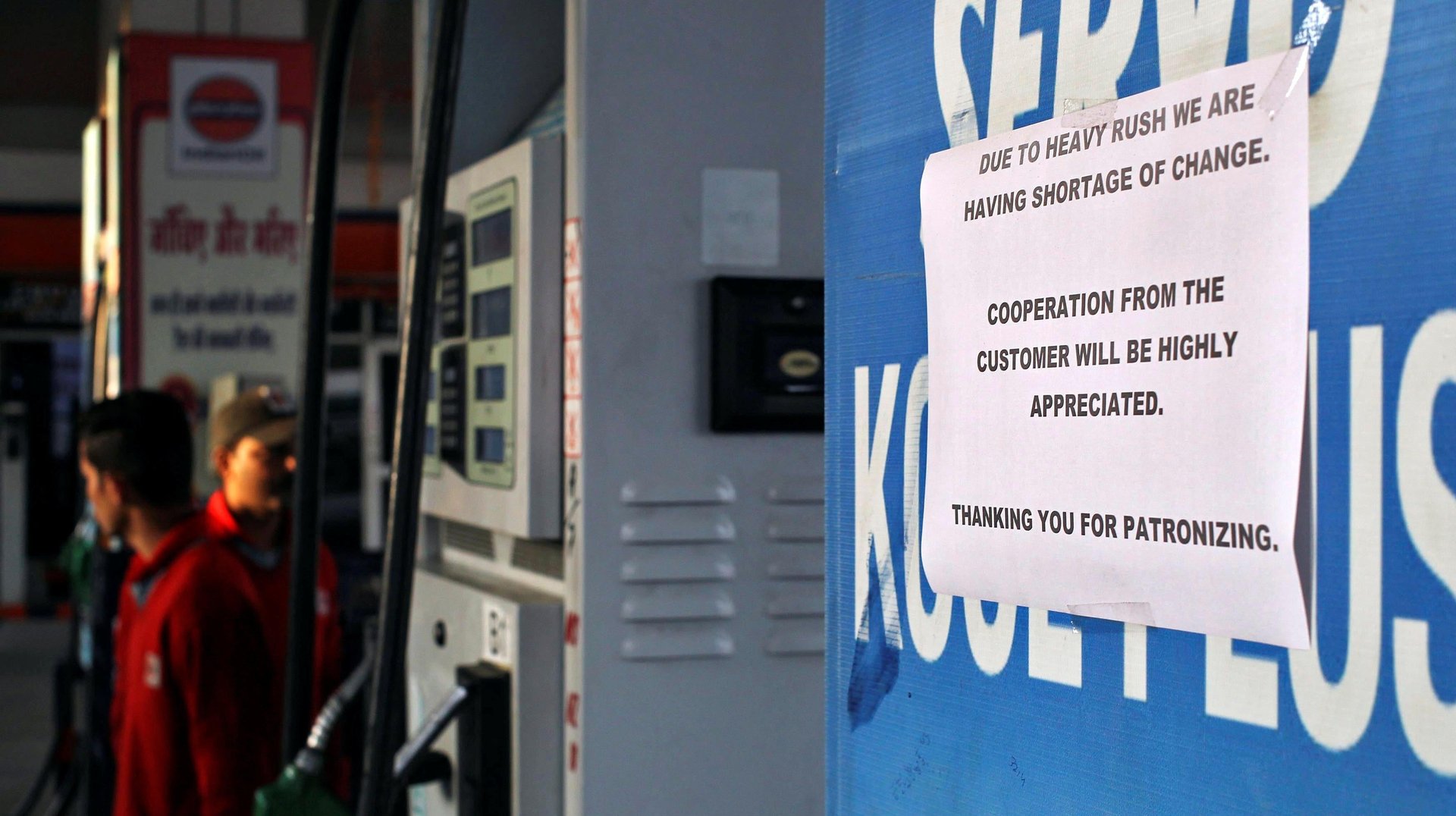India's petrol pumps are seeing 90% sales in withdrawn 2,000-rupee notes
Digital payments for fuel have dwindled to mere 10% since Friday, down from the average 40% earlier.

Indians are using their 2,000-rupee banknotes to buy up petrol and diesel. But that’s not all.
From neighbourhood grocers to cash-on-delivery on e-commerce sites to high-end jewelry—they are all seeing a spurt in the use of the now-withdrawn currency notes.
On May 19, the Reserve Bank of India (RBI) announced that these high-value banknotes were being withdrawn out of circulation, although they will remain legal tender. Indians have since been looking to offload their stocks of the notes. Starting today (May 23), they are required to deposit or exchange these notes up to a limit of Rs 20,000 a day at any bank branch.
At petrol pumps alone, the share of cash payments has expanded to 90% over the past three days, the Business Standard reported today. Digital payments at fuel outlets have dwindled to a mere 10% of daily sales from the average of 40% earlier, it said citing the All India Petrol Pump Dealers’ Association’s (AIPDA) data.
A “majority of the customers are trying to use Rs 2,000 notes even for small purchases of Rs 100-200,” AIPDA has said, likening the situation to the one “faced during the 2016 demonetization.” It has sought the RBI’s help in making small denomination notes of Rs 500 and Rs 100 available for smoother operations.
It’s not banks that Indians are heading to
The Rs 2,000 note constitutes around 10.8% of the total currency in circulation—or $44.27 billion—in India.
Besides petrol pumps, groceries and eateries, too, have witnessed a jump in their usage. On e-commerce websites, people are opting for cash-on-delivery. Food deliverer Zomato, for instance, has claimed that up to 72% of users opting for cash-on-delivery had been paying with Rs 2,000 notes since last Friday (May 19), although the Business Standard suggested this claim may be a “marketing ruse”.
The affluent, on the other hand, are buying up jewelry.
“Discretionary spending, especially in urban India on some durables and services, could see a spurt,” Yuvika Singhal, an economist at QuantEco Research, said in a LinkedIn post. “Gold, small appliances, home furnishing, mobile phones, membership services of salons, gyms could receive a shot in the arm.”
Indian business’s centuries-old Angadia system of parallel money transfers has also stopped accepting Rs 2,000 notes. Some attempts have been reported to exchange rupees for dollars and euros in the forex black market, The Economic Times reported today.
While banks are reportedly adequately prepared to deal with flocking crowds, day-1 has been largely quiet, with relatively smaller queues at cash counters.
The taxman is the elephant in the room
When prime minister Narendra Modi abruptly banned old notes of Rs 500 and Rs 1000 in 2016, his agenda was a crackdown on unaccounted wealth. There’s no such claim this time.
Yet, Indians are depositing their cash savings in banks to avoid tax enquiries, according to Priyank Ghia, a partner with Mumbai-based chartered accounting firm Chokshi & Chokshi.
“Those who had deposited cash during demonetisation had received income tax notices. The government had then assured that savings of up to Rs 2.5 lakh would not be questioned by authorities. However, this time, there is no such guideline yet,” Ghia told the daily.
